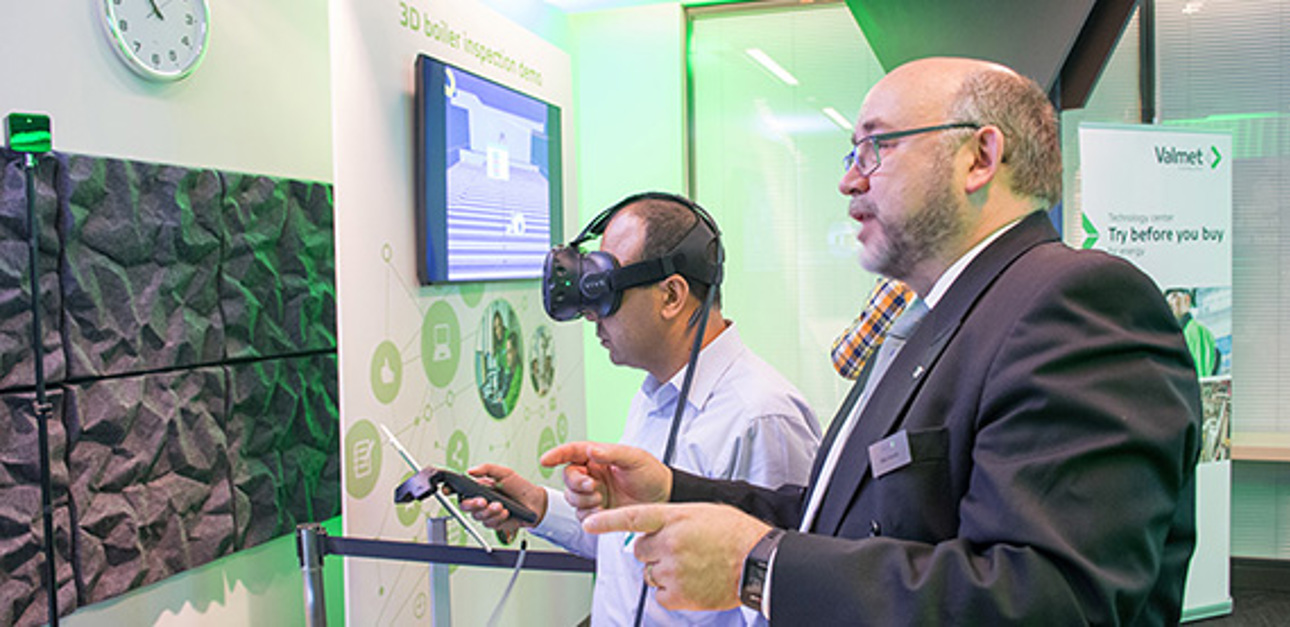Game technology in industry – how to utilize augmented and virtual reality within industry
Dec 8, 2016

In my work in industrial automation product development, I have had a front row seat in monitoring the transformation of the Internet. In my opinion, the Industrial Internet of Things, or Industrial Internet, doesn't represent an actual revolution but rather evolution. For example, Valmet introduced the first digital automation systems to the market already in 1979, power plants have supported remote operation for some decades now and specialists can provide assistance in fault repairs to a plant on the other side of the world. However, the development of the Internet and new mobile communication technologies has accelerated the development in this millennium. The development of analytics and Big Data has brought increased power to process optimization. What next?
In the games industry, large sums of money are spent on devices, games and the gaming itself. Hardware and application development also benefit from this. As technology reaches a sufficient level of maturity and the prices come down, new applications will also appear in factories. For instance, the gesture and speech controls familiar from video game consoles are perfectly suited for industrial control rooms. In fact, the first applications (article in Finnish) have been created with Microsoft Kinect, and the actual integration into a factory's automation system was relatively simple in the end.
Control room transferred to glasses
Augmented reality was introduced to hundreds of millions of people with the Pokémon Go game, launched in the summer of 2016. Augmented reality also has numerous potential applications in industry. Today, control rooms are the nerve centers of plants and factories. In control rooms, thousands of measurements from different parts of the process are displayed on dozens of screens, with the process stages drawn in P&I diagrams.
With the help of augmented reality, process information can be detached from control rooms, and mechanics can take the information they need with them when they work on a machine. Instead of a separate terminal device, it is most useful to display the information on glasses. The benefit is that the information is connected with the actual reality – when looking at the machine, the mechanic can see the selected information for the process stage in question and the required additional information, such as installation instructions. The application must be dynamic so that the information displayed is filtered according to the current needs. Usually, there is actually too much information available concerning the process, so the challenge is to display the relevant information for the situation at hand.
A new experience in the virtual world
Virtual reality applications are also being introduced to industrial use. Virtual applications enable designing and viewing things in a new way. The first applications are used in training in many fields; this way, any errors are made in a virtual environment. The virtual world can be utilized, for instance, when inspecting damage. Tables of thousands of measuring points contained in a report of hundreds of pages can be visualized within the virtual world in the right place inside the machine or boiler, so that the user can immediately see the overall situation.
Benefits are created and problems solved
By utilizing augmented or virtual reality, work can be made easier and the user experience improved. Operation and work stages can be planned and tested in safer and more efficient ways. Remote control can be taken to a whole new level by utilizing the avatars familiar from the video games world. The change is not limited to new devices and applications, but also has an impact on the concept of work and brings about an increasing detachment from time and place.
The most concrete challenges are related to the equipment. The battery life of the glasses restricts the daily operating time. Neither is the ergonomics at a level where the equipment could be used e.g. for a full eight-hour shift. Reflecting the way the ergonomics of displays has developed over the past years, it must be ensured in the development work for glasses that there will not be any new occupational diseases, such as virtual-world travel sickness or a "virtual neck" instead of the mouse elbow.
Within industry, problems occur that do not exist in the video games world. For instance, the significance of operational reliability and information security is on a completely different level in industry than in games. On the other hand, existing 3D models of the machines and equipment facilitate the introduction of virtual applications in the process industry.
From ideas to commercial applications
How can this be accomplished in reality? It is clear that not all of the present-day ideas will ever be realized. The equipment develops and changes. Applications that work best and provide sufficient added value will attract customers.
With many applications, we are currently at the demo stage. We can show functioning individual solutions at trade fairs, and individual customers are willing to participate in pilot application projects. First-generation devices for the hologram and virtual reality glasses suitable for use are currently available. Presumably in a year, we will have a new generation of devices available, and the first truly commercial applications and business models may appear in 2018.
Mika Karaila
Research Manager, Automation R&D